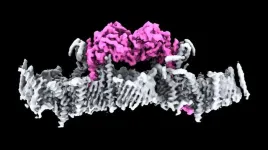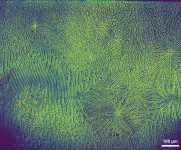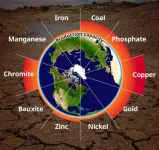(Press-News.org) The U.S. National Institutes of Health’s recent decision to impose a 15% cap on facilities and administrative (F&A) cost reimbursements threatens to undermine the quality and sustainability of university research by slashing indirect funding by $4 billion. In a Policy Forum, Jeongwon Choi and colleagues argue that this policy is fundamentally flawed, as it disregards the essential role of indirect costs, such as infrastructure, utilities, and administrative support, in enabling scientific research. The current system, governed by rigorous federal oversight and audits, ensures that F&A reimbursements are fair and necessary, varying across institutions based on actual costs. NIH’s argument that reducing F&A costs will redirect more funds to direct research is misleading, as indirect and direct costs are interdependent. Cutting F&A funding will ultimately weaken research capacity rather than enhance it. In response to several lawsuits disputing this decision, U.S. District Judge Angel Kelly issued a temporary restraining order on the policy. According to Choi et al., Judge Kelly’s skepticism of NIH’s justification underscores that this policy is not a cost-saving measure for efficiency but rather a funding reduction in disguise, with potentially detrimental consequences for the U.S. research ecosystem. Cutting F&A funding will ultimately weaken research capacity, stifle scientific competitiveness, and impose increased financial strain on institutions. “The scientific community, firms that depend on university research, members of Congress and their constituents, and Judge Kelly in particular, should consider these implications of the proposed plan,” write the authors. “The consequences of failing to do so […] are simply too dire to ignore.”
END
NIH’s flat 15% funding policy is misguided and damaging
Summary author: Walter Beckwith
2025-03-13
ELSE PRESS RELEASES FROM THIS DATE:
AI reveals new insights into the flow of Antarctic ice
2025-03-13
As the planet warms, Antarctica’s ice sheet is melting and contributing to sea-level rise around the globe. Antarctica holds enough frozen water to raise global sea levels by 190 feet, so precisely predicting how it will move and melt now and in the future is vital for protecting coastal areas. But most climate models struggle to accurately simulate the movement of Antarctic ice due to sparse data and the complexity of interactions between the ocean, atmosphere, and frozen surface.
In a paper published March 13 in Science, researchers at Stanford University used machine learning to analyze high-resolution ...
Scientists solve decades-long Parkinson’s mystery
2025-03-13
WEHI researchers have made a huge leap forward in the fight against Parkinson’s disease, solving a decades-long mystery that paves the way for development of new drugs to treat the condition.
First discovered over 20 years ago, PINK1 is a protein directly linked to Parkinson’s disease – the fastest growing neurodegenerative condition in the world. Until now, no one had seen what human PINK1 looks like, how PINK1 attaches to the surface of damaged mitochondria, or how it is switched on.
In ...
Spinning, twisted light could power next-generation electronics
2025-03-13
Researchers have advanced a decades-old challenge in the field of organic semiconductors, opening new possibilities for the future of electronics.
The researchers, led by the University of Cambridge and the Eindhoven University of Technology, have created an organic semiconductor that forces electrons to move in a spiral pattern, which could improve the efficiency of OLED displays in television and smartphone screens, or power next-generation computing technologies such as spintronics and quantum computing.
The semiconductor they developed emits circularly polarised ...
A planetary boundary for geological resources: Limits of regional water availability
2025-03-13
Geological resources such as critical metals and minerals, essential for the diffusion of technologies such as renewable energy and energy storage towards a decarbonized society, are indispensable for supporting modern life in the form of various products and services. Their demand is expected to increase in the coming years owing to global population as well as economic growth. Thus far, scientists and policymakers have primarily discussed geological resource availability from the viewpoint of reserves and resources in the ecosphere and technosphere. However, resources such as ...
Astronomy’s dirty window to space
2025-03-13
When we observe distant celestial objects, there is a possible catch: Is that star I am observing really as reddish as it appears? Or does the star merely look reddish, since its light has had to travel through a cloud of cosmic dust to reach our telescope? For accurate observations, astronomers need to know the amount of dust between them and their distant targets. Not only does dust make objects appear reddish (“reddening”), it also makes them appear fainter than they really are (“extinction”). It’s like we are looking out into space through a dirty ...
New study reveals young, active patients who have total knee replacements are unlikely to need revision surgery in their lifetime
2025-03-13
A 40-year study by Hospital for Special Surgery (HSS) researchers has found that active young adults who underwent total knee replacement were unlikely to require knee replacement revision in their lifetime, according to a new study shared today in a podium presentation at the American Academy of Orthopaedic Surgeons 2025 Annual Meeting.1
“As an increasing number of younger adults in their 40s and 50s consider total knee replacement, many wonder how long knee implants last before requiring a revision procedure,” ...
Thinking outside the box: Uncovering a novel approach to brainwave monitoring
2025-03-13
ROCHESTER, Minnesota — Mayo Clinic researchers have found a new way to more precisely detect and monitor brain cell activity during deep brain stimulation, a common treatment for movement disorders such as Parkinson's disease and tremor. This precision may help doctors adjust electrode placement and stimulation in real time, providing better, more personalized care for patients receiving the surgical procedure. The study is published in the Journal of Neurophysiology.
Deep brain stimulation (DBS) involves implanting electrodes in the brain that emit electrical pulses to alleviate symptoms. The electrodes remain inside the brain connected to a battery implanted near ...
Combination immunotherapy before surgery may increase survival in people with head and neck cancer
2025-03-13
CHAPEL HILL, North Carolina—Researchers conducting a clinical trial of immunotherapy drugs for people with head and neck squamous cell carcinomas (HNSCCs) found that patients responded better to a combination of two immunotherapies than patients who received just one immunotherapy drug.
The scientists also analyzed immune cells in each person’s tumor after one month of immunotherapy to see which type of immune cells were activated to fight their cancer, suggesting that some of the cells and targets they identified could help individualize treatment benefit.
The findings appeared March 13, 2025 in Cancer Cell.
HNSCCs occur in the oral cavity, pharynx, hypopharynx, larynx, nasal ...
MIT engineers turn skin cells directly into neurons for cell therapy
2025-03-13
CAMBRIDGE, MA -- Converting one type of cell to another — for example, a skin cell to a neuron — can be done through a process that requires the skin cell to be induced into a “pluripotent” stem cell, then differentiated into a neuron. Researchers at MIT have now devised a simplified process that bypasses the stem cell stage, converting a skin cell directly into a neuron.
Working with mouse cells, the researchers developed a conversion method that is highly efficient and can produce more than 10 neurons from a single skin cell. If replicated in human ...
High sugar-sweetened beverage intake and oral cavity cancer in smoking and nonsmoking women
2025-03-13
About The Study: High sugar-sweetened beverage intake was associated with a significantly increased risk of oral cavity cancer in women, regardless of smoking or drinking habits, yet with low baseline risk in this study. Additional studies are needed in larger cohorts, including males, to validate the impact of these findings.
Corresponding Author: To contact the corresponding author, Brittany Barber, MD, MSc, email bbarber1@uw.edu.
To access the embargoed study: Visit our For The Media website at this link https://media.jamanetwork.com/
(doi:10.1001/jamaoto.2024.5252)
Editor’s ...
LAST 30 PRESS RELEASES:
Why nail-biting, procrastination and other self-sabotaging behaviors are rooted in survival instincts
Regional variations in mechanical properties of porcine leptomeninges
Artificial empathy in therapy and healthcare: advancements in interpersonal interaction technologies
Why some brains switch gears more efficiently than others
UVA’s Jundong Li wins ICDM’S 2025 Tao Li Award for data mining, machine learning
UVA’s low-power, high-performance computer power player Mircea Stan earns National Academy of Inventors fellowship
Not playing by the rules: USU researcher explores filamentous algae dynamics in rivers
Do our body clocks influence our risk of dementia?
Anthropologists offer new evidence of bipedalism in long-debated fossil discovery
Safer receipt paper from wood
Dosage-sensitive genes suggest no whole-genome duplications in ancestral angiosperm
First ancient human herpesvirus genomes document their deep history with humans
Why Some Bacteria Survive Antibiotics and How to Stop Them - New study reveals that bacteria can survive antibiotic treatment through two fundamentally different “shutdown modes”
UCLA study links scar healing to dangerous placenta condition
CHANGE-seq-BE finds off-target changes in the genome from base editors
The Journal of Nuclear Medicine Ahead-of-Print Tip Sheet: January 2, 2026
Delayed or absent first dose of measles, mumps, and rubella vaccination
Trends in US preterm birth rates by household income and race and ethnicity
Study identifies potential biomarker linked to progression and brain inflammation in multiple sclerosis
Many mothers in Norway do not show up for postnatal check-ups
Researchers want to find out why quick clay is so unstable
Superradiant spins show teamwork at the quantum scale
Cleveland Clinic Research links tumor bacteria to immunotherapy resistance in head and neck cancer
First Editorial of 2026: Resisting AI slop
Joint ground- and space-based observations reveal Saturn-mass rogue planet
Inheritable genetic variant offers protection against blood cancer risk and progression
Pigs settled Pacific islands alongside early human voyagers
A Coral reef’s daily pulse reshapes microbes in surrounding waters
EAST Tokamak experiments exceed plasma density limit, offering new approach to fusion ignition
Groundbreaking discovery reveals Africa’s oldest cremation pyre and complex ritual practices
[Press-News.org] NIH’s flat 15% funding policy is misguided and damagingSummary author: Walter Beckwith





